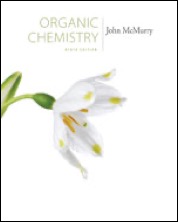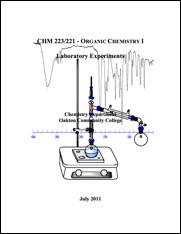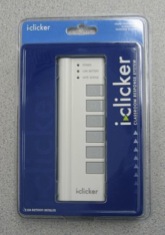Organic Chemistry II Spring 2020
Sections
Info
| Prefix | Number | CRN | Name | Credit Hours | Lecture Hours | Lab Hours |
|---|---|---|---|---|---|---|
| CHM | 224-001 | 10035 | Organic Chemistry II | 5 | 3 | 6 |
Class Schedule
| Instructor/CRN | Type | Time | Days | Location |
|---|---|---|---|---|
| Landrie 10035 | Lec | 11:00-12:15 am | TR | 156 Lee SHC |
| Lab | 12:30 pm - 3:20 pm | TR | 340 Lee SHC |
Welcome and Course Introduction
Welcome to Organic Chemistry II. My name is Dr. Chad Landrie and I will be your instructor this semester. I’m always especially excited to teach this course because you are not just students, but seasoned, experienced organic chemists (And if you’re not, no worries. I’ll get you caught up in no time). We can finally get to the fun stuff! In many ways I think you’ll find orgo II more thought provoking as we learn new chemical transformations that allow us to synthesize bigger and more complex molecules and as we investigate essential biomolecules that will be used to describe the biological world around us. Let me begin by introducing the course content to you and then end by giving you a short to-do list that should be completed during the first week.The content of Organic Chemistry II can be roughly divided into two parts. The first focuses on the reaction chemistry of carbonyl compounds (functional groups with carbon-oxygen double bonds) and the second on the nature and properties of biomolecules. Both parts of the course build upon the essential concepts in Organic Chemistry I, namely: intermolecular forces, chirality, bonding, resonance, and the electronic nature of organic molecules. In orgo I, you’ve used these concepts to explain phenomena such as the trend in boiling points of hydrocarbons and the relative acidity of carboxylic acids; you used your knowledge of organic reactions to design syntheses of small organic molecules; you learned how electrons flow during a chemical reaction and you depicted that information using curved-arrow notation–the infamous mechanism.
In the first half of orgo II we’ll continue to use the essential concepts from orgo I to describe new functional groups and rationalize their reactivity. Unlike orgo I, however, where we only learned a couple carbon-carbon bond-forming reactions (e.g., Diels-Alder, alkyne alkylation), many of the reactions introduced in orgo II will be used to do just that. Transformations such as the Aldol condensation and the Wittig reaction are the Holy Grail of organic chemistry since they allow us to connect carbon fragments together. Those of you interested in synthesis of natural products and pharmaceuticals will find the first half of the course engaging.
The second half of orgo II will appeal to the biologists in the class (most of you!). We will discuss the physical and chemical properties of biomolecules such as amino acids, proteins, carbohydrates, lipids, steroids and nucleic acids including the chemical reactions in which they participate. Notably, many of the chemical reactions of biomolecules are similar to those we explored in the first half of the course. Their chemical reactivity will then allow us to discuss how each of these molecules is synthesized in living systems (biosynthesis) as well as how they are used in the material world (e.g., hydrolysis of lipids to make soap and transesterification of lipids to form biodiesel.) The course culminates with a discussion of how living systems metabolize some of these biomolecules. Here we’ll focus on the organic transformations occurring in some of the enzyme-mediated processes. Metabolism is a rather innocuous word for a subject of great breadth; in other words, we’ll just survey some of the many reactions covered under this enormous topic.
As you can see, we have quite a bit to explore this semester. You will find the course challenging (that’s good!) but I hope you will also find the content and presentation meaningful for your future careers and academic endeavors. I want all of you to be successful and I will do whatever I can this semester to help you achieve your goals. We will jump right in on our first day of class; so, to help you get ready, I’ve put together a short to-do list. Please work diligently to complete each item during the first week. If you have questions or need help, don’t hesitate to stop by my office (307 Lee Center), call (847-376-7439), Skype (clandrie) or send an email (clandrie@oakton.edu).
Cheers,
Dr. L
Quick Start Guide
1. Log into our learning management system (LMS) with your Oakton credentials. We are using Desire To Learn (D2L) by Brightspace. To log in, go to: https://d2l.oakton.edu.
2. Obtain the required and recommended resources for the course including the textbook, laboratory manual, laboratory notebook and goggles. The full list is in the syllabus, which can be found on the course website in HTML form or downloaded as a PDF from the Download Center or D2L. The textbook is available in the bookstore and comes bundled with an OWL access code. If you choose not to buy the textbook in the bookstore, you will have to purchase an OWL access code separately. We are currently using the 9th edition of Organic Chemistry by John McMurray.
3. Register your OWL online homework access code. An access code comes bundled with the loose-leaf textbook that can be purchased in the bookstore. You may also purchase an access code directly from Cengage. Either way, follow these steps:
a. Log into D2L and go to our course. It's recommended that you use Firefox. You must also enable pop-ups.
b. In the Content area, click on the Homework - OWL module.
c. Follow the links labeled STEP ONE, STEP TWO, etc.
4. Complete the first OWL homework assignment, OWL – Lecture 1 (Content > Homework - OWL > Assignments) before our first class if possible. This assignment will train you how to navigate and use the OWL platform.
5. Decide now whether you intend to purchase your own i>Clicker or whether you will use a loaned i>Clicker that must be returned after each class. For more information, read the section on i>Clickers in the course syllabus. 6. Access the syllabus from D2L (https://d2l.oakton.edu) or the course website. Read it carefully to familiarize yourself with the course requirements, schedule and policies. I will ask if there are any questions or clarifications on the first day; however, I will not methodically present the entire syllabus during class time. I also will not print hard copies unless requested. 7. Setup your D2L notifications so that you are alerted when a new News Item is posted (e.g., text message). I post several per week during the semester, some right before class. You can adjust your D2L notification settings so that these News items are sent to your email or phone as a text message (recommended). For instructions on how to change your notification settings, watch the Updating Your D2L Notifications Settings within D2L or on my YouTube channel.
8. Take the Pre-Class Questionnaire in D2L. This is required and you get points for it! Complete this step before attending the meeting you’ll schedule below.
9.Schedule an appointment to meet with me for 10-15 minutes during the first two weeks of class. This is required and you'll get points for it! I just want to chat to get to know you a little better. No pressure. Please schedule your appointment at http://chadlandrie.youcanbook.me.
10. Take Quiz 1 and Quiz 2 by the end of the second week. These are both online D2L quizzes and are short. You must have already attended your 10-15 minutes meeting to complete Quiz 2.
11. Attend the first class! Attendance is required and important for your success. We will be using i>Clickers beginning on the first day of class and your attendance is recorded each time you vote.
Required Resources
All required resources are available for purchase at the OCC bookstore. i>Clickers may also be purchased from third parties, new or used, or borrowed from friends not using the clicker during that particular semester.
1. Required: McMurray, J. Organic Chemistry, 9th ed.; Cengage: Boston, MA, 2016. ISBN: 978-1-305-08048-5 (hardcover) or McMurray, J. Organic Chemistry Loose Leaf with OWL, 9th ed.; Cengage: Boston, MA, 2016. ISBN: 978-1-305-70102-1 (loose-leaf) .

2. OWLv2. This is the Cengage online homework platform. An access code is bundled with the loose-leaf text sold by the Oakton Bookstore. It can also be purchased directly from Cengage. Follow instructions within D2L. Access code required after 14-day trial period.
3. Required: CHM 222/224 – Organic Chemistry II Laboratory Experiments.

4. Student Lab Notebook, Hayden-McNeil, ISBN: 978-1-930882-74-4 (Or similar; Must be spiral-bound and contain at least 50 pages)
5. Required: Chemical splash goggles (indirectly vented). The goggles must seal completely around the face. Shield-type or glasses-type are not allowed.

6. Recommended: i>Clicker (1 or 2); MacMillan (www.iclicker.com); ISBN: 1429280476. If students do not wish to purchase their own i>Clicker, one will be loaned to them at the beginning of each class.

7. Recommended: Molecular model set. Preferred set is “MOLECULAR VISIONS Organic, Inorganic, Organometallic” in a green plastic box. Sold by Darling Models, INC. ISBN: 978-09648837-1-0.







